Xiaomi Mi 9 SE Review
Xiaomi Mi 9 SE Review
Android’s answer to the iPhone XR?
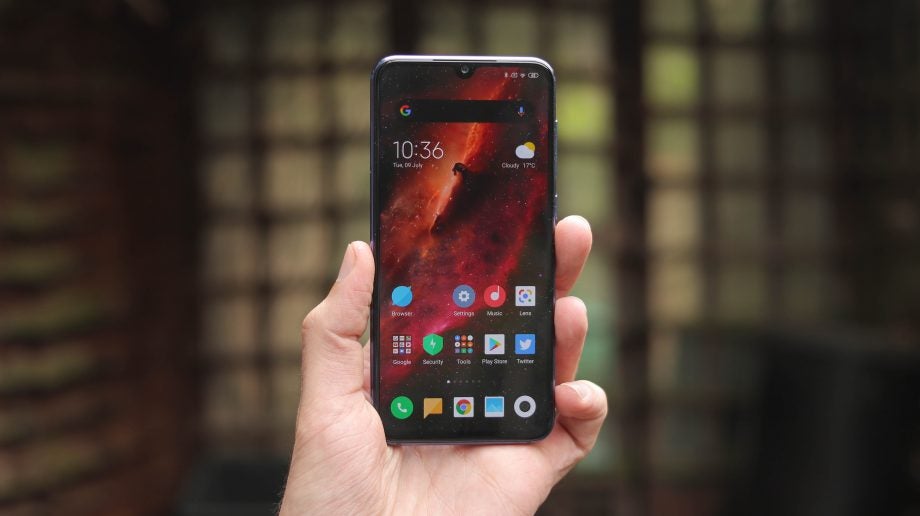
Verdict
With a little bit of tweaking, the Xiaomi Mi 9 SE can deliver a premium flagship feel, a fantastically versatile camera and great performance, not to mention a killer Super AMOLED screen.
Pros
- Excellent design
- Great camera
- Snappy performance
Cons
- Interface has some quirks
- No 3.5mm headphone jack
- Mono speaker
Key Specifications
- Review Price: £349
- 19.5:9, 5.97-inch screen with Full HD resolution
- Qualcomm Snapdragon 712 processor
- 6GB RAM
- Super AMOLED screen
- In-display fingerprint
- 48MP camera
What is the Xiaomi Mi 9 SE?
The Xiaomi Mi 9 SE is a pocketable glass and metal phone that feels and looks like a flagship, and despite an RRP of £349, it can be picked up for under £300 if you shop around. The phone has a 19.5:9, 5.97-inch screen that sports a Full HD resolution, so it’s sharper than the much pricier iPhone XR.
The Mi 9 SE’s 3070mAh battery is on the small side, on paper, however, given the phone’s midrange power demands, it could go either way. There’s also a Qualcomm Snapdragon 712 processor which, when paired with 6GB RAM onboard, is an impressive spec from a power point of view.
While the Xiaomi Mi 9 SE doesn’t have wireless charging or stereo speakers, as found on flagships such as Google’s Pixel 3, it still delivers an under-display fingerprint scanner and a Super AMOLED screen. The phone’s 48MP camera also features the same sensor used in many of today’s flagships, including the OnePlus 7 Pro.
Design – The Xiaomi Mi 9 SE looks like a flagship
Looking like a 2018 flagship, the Xiaomi Mi 9 SE is a handsome slice of smartphone. It’s available in three colours – blue, violet and grey – and all look great with their high-gloss finishes. While they do attract fingerprints very readily, fortunately, there’s a case in the box, so you can protect yours from the get-go and keep it smudge-free.
With its 19.5:9 screen that clocks in at under 6 inches, the Xiaomi Mi 9 SE is long and thin, making it easy to use one-handed. Despite having a bigger screen than a iPhone XS, it still manages to be slimmer and lighter than Apple’s flagship. All the buttons are on the right side of the device. Meanwhile, on the left is a dual-SIM card slot.
With its elegantly rounded, high-gloss metal frame, sandwiched in between two sheets of Gorilla Glass, the Xiaomi Mi 9 SE feels slick. It can be a bit slippery – but, generally speaking, can be held snuggly and securely, especially when in its case, and is comfortable for big and small hands alike.
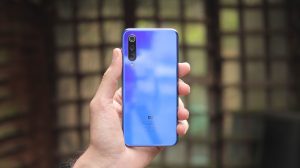
There’s no headphone jack or microSD card slot, and at the base of the phone is a mono-speaker, so it isn’t quite a flagship from an audio point of view. That said, the Mi 9 SE’s USB-C port is a nice-to-have, given the fact the similarly priced Oppo RX17 Neo features a (now dated) micro USB port.
Unlike flagship devices like the Samsung Galaxy S10, the Xiaomi Mi 9 SE isn’t IP-rated for water or dust resistance.
Screen – The Xiaomi Mi 9 SE has an impressive Super AMOLED display
The design is near enough best-in-class given the Xiaomi Mi 9 SE’s pricing, and so too is the screen. For starters, this panel is sharp. A pixel density of 432 pixels-per-inch means it’s crisper than the OnePlus 7 and the Huawei P30 Pro.
Better still is the fact the Mi 9 SE uses a Super AMOLED display, complete with a host of colour customisation options within the settings. The display is punchy by default, though can be muted for more natural tones, and produces deep blacks too.
Brightness is very impressive, as are viewing angles, with only slight colour shifting at extreme angles – something most flagship OLEDs suffer from, too.
There’s also a dark mode in the settings to take advantage of depth of blacks the Mi 9 SE’s screen produces, and you can also hide the notch. Frustratingly, rather than go the Huawei route when hiding the notch, still displaying notifications and the time in the blacked out area either side of the selfie camera, hiding it on the Mi 9 SE will simply push the screen down, notifications included, thereby shrinking the screen and totally missing a trick.
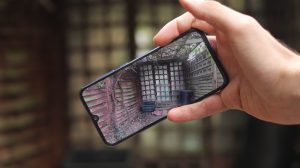
In fact, our only real gripes with the screen are from a software point of view. When gaming in full-screen specifically, the Mi 9 SE crops the notch out, but does so without a curve at either corner. This creates an ugly, asymmetrical look – two curved corners, two right-angle corners. Hopefully this will be remedied in a software update.
Software – The Xiaomi Mi 9 SE runs a future-proof OS with lots of customisation options
Just like the Redmi Note 7, the Xiaomi Mi 9 SE runs Android 9.0 with MIUI 10, over the top, also found on the flagship Xiaomi Mi 9.
Running on top of Android Pie, it’s great to see the latest, widely available version of Google’s OS here; both future-proofing the phone and ensuring app support is looking great.
The interface doesn’t offer an apps drawer. Instead, it opts for an iOS-esque setup. Shortcuts and widgets can be organised across your home screens, and to the left of these is a utility display for quick access to features that Xiaomi believes users need to hand. These include tools like a QR code reader and note taker. There’s also a pull-down notifications tray/quick toggle menu at the top of the screen.
The phone features plenty of customisation options throughout its interface. Navigation is controlled by gestures, but you can reinstate the navigation bar, for example. In addition, a customisable power on/off schedule is available, as too is a password-protected virtual “Second Space” for sensitive information.
There are some annoying quirks too, though. For example, every time you install an app, it gets scanned for viruses. While this sounds great, it doesn’t simply scan in the background, it takes you to a different screen, loaded up with ads that are a pain to bypass.

You can remove this feature, and also reinstate an applications tray with a custom launcher, two things we did – after which the experience went from a 60% to a 90%, but if you’re not prepared to tweak the UI to suit you, some elements might get a bit frustrating.
Performance – The Xiaomi Mi 9 SE boasts impressive power for its price
With its Qualcomm Snapdragon 712 processor combined with 6GB of RAM and either 64GB or 128GB of storage, the Xiaomi Mi 9 SE is like a flagship/upper midrange smartphone lovechild.
The interface was super smooth in our two weeks with the phone, as too were third party apps, and the camera, which shot and played back up to 4K footage without breaking a sweat.
While not flagship-grade, benchmarks still impress for the sub-£300 phone, with its Geekbench multi-core score clocking in at 5968. The Mi 9 SE’s Antutu score was 181768, putting it about on-par with a Pixel 2. This is reflected in gaming, with the phone handling 2D and 3D titles like a champion. There’s no microSD card, which might put some off, but with a capacity of up to 128GB storage, there should be room for all but the most demanding users. Additionally, there’s also a dual SIM card slot.
The bottom-firing, mono-speaker is as loud as it needs to be, though is very easy to cover up when gaming. The lack of a headphone jack also means you’ll need to have a pair of Bluetooth cans to get the best from it, though it does ship with a headphone jack to USB-C adaptor dongle in the box.

Biometric security comes in the form of facial recognition and an under display fingerprint scanner. In tandem, both work quickly, however, the fingerprint scanner isn’t quite as fast as traditional scanners.
Camera – The Xiaomi Mi 9 SE has a fantastically versatile camera for a mid-range phone
The Xiaomi Mi 9 SE’s triple camera has a virtually identical setup to that found on the flagship Mi 9, a 48-megapixel (f/1.8) primary camera, an 8-megapixel (f/2.4) telephoto camera and a 13MP (f/2.4) ultrawide angle camera. OIS (optical image stabilisation) and laser autofocus are both absent here, but it still impressed us in our time with it.
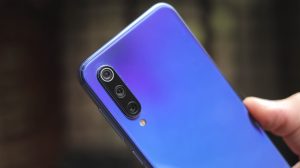
The primary sensor may be 48 megapixels in resolution but pictures are rendered at 12 megapixels, unless you hit the override switch in 48M mode. This lower-resolution image benefits from pixel binning, a technique that combines information from multiple pixels to create a better, albeit lower-res, image.
In good light, detail captured by the Xiaomi Mi 9 SE is superb, though is a touch high when it comes to contrast and saturation. That said, you can drop these defaults in the settings. Pinch into shots you’ve taken, and things hold up well, and this is especially true in the 48MP mode which we’d recommend firing up when lighting conditions aren’t too challenging.

Skies are bright and colourful

Colours can come across very saturated
When HDR is activated, even challenging scenes deliver a healthy amount of dynamic range when captured on the Mi 9 SE. That said, Auto HDR could do with being a bit more sensitive, as it didn’t always fire up when we needed it, so if you don’t see the HDR indicator, remember to override it.
There are also plenty of shooting options. These include Night, Panorama, AI, Portrait and Pro modes. Absent from older Xiaomi phones is the new 48MP mode, taking advantage of the sensor’s high pixel-count, and creating images that can be pinched right into.
In low light, the Xiaomi Mi 9 SE doesn’t do too badly. In night mode, it captures atmospheric night shots with slightly bumped up brightness, activating a long exposure shot like the Huawei P30 series. Even in automatic mode, the low light performance is respectable from the main camera.

Night Mode turned on
The telephoto and wide camera both do a decent job in good light, also taking advantage of the auto HDR feature. That said, when the lights drop, we’d suggest avoiding both altogether.
As for the 20-megapixel (f/2.0) selfie camera, it also features auto HDR, so handles backlit scenes better than many midrangers. The Beauty mode isn’t overbearing by default, flattering rather than just flattening subjects. It can also be dialled up and down, which is welcome.

The Beauty Mode isn’t too strong
Detail in selfies is great in good light, but in low light, as noise creeps in clarity naturally drops. On the plus, the screen can double up as a flashlight, which helps things along nicely.
Video is recorded at up to 4K resolution, and this captures a superb level of detail for the price, especially in good light – provided you hold the phone rock steady. While in Full HD, stabilisation is great, despite the lack of OIS, in 4K, it doesn’t seem to fire up. Also frustrating is the fact video doesn’t take advantage of the wide or telephoto cameras, just the primary module.
Battery Life – The Xiaomi Mi 9 SE has a small battery, but it lasts a full day
The Xiaomi Mi 9 SE’s 3070mAh battery might sound small, but when you consider its sub-6-inch screen size and mid-range power demands, it’s not too surprising it makes it through a full day.
In our tests, the Xiaomi Mi 9 SE handled an hour of streaming video, gaming and music playback with the screen off very well, leaving over 60% remaining. In real world use, we were wrapping up with about 20% left in the tank by 9pm, with 6am starts and moderate use.
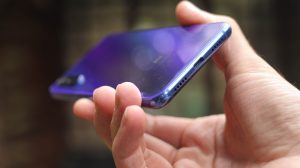
There are also a range of battery optimisation options within the settings to eke out even more battery life from the Mi 9 SE – and if you do fall short before the day is done, it supports 18W fast charging, shipping with a compatible charger in the box.
Should I buy the Xiaomi Mi 9 SE?
The Xiaomi Mi 9 SE is a small, premium smartphone with a very good camera and ample power under the hood, given its price. While its RRP is in the £350 region, you can pick it up for significantly less than £300 if you shop around.
This means it competes directly with the likes of the Nokia 8.1, a significantly worse phone in almost every respect, despite the fact it runs with a cleaner interface.
Alternatively, the Huawei P30 Lite is a great looking ‘affordable flagship’ that delivers a similar look to the Mi 9 SE, but it pales in comparison from a power point of view.
You could even stump up the extra and pick up the Google Pixel 3A for a stock, mid-range experience complete with a stellar single camera. That said, it doesn’t have the versatility of a zoom lens or an ultra wide-angle camera, and the Mi 9 SE feels significantly more premium in the hand.
Ultimately, therefore, while the Mi 9 SE might not be perfect in every respect, you probably won’t get more for less in a premium, pocketable package.
Verdict
With a little bit of tweaking, the Xiaomi Mi 9 SE can deliver a premium flagship feel, a fantastically versatile camera and great performance, not to mention a killer Super AMOLED screen.
How we test phones
We test every mobile phone we review thoroughly. We use industry standard tests to compare features properly and we use the phone as our main device over the review period. We’ll always tell you what we find and we never, ever, accept money to review a product.


